Crime
Spanish Police Have Seized Five Fake Goya and Velázquez Paintings Supposedly Worth a Collective $84 Million
The works will go on view in an exhibition of seized forgeries curated in conjunction with Spanish police.
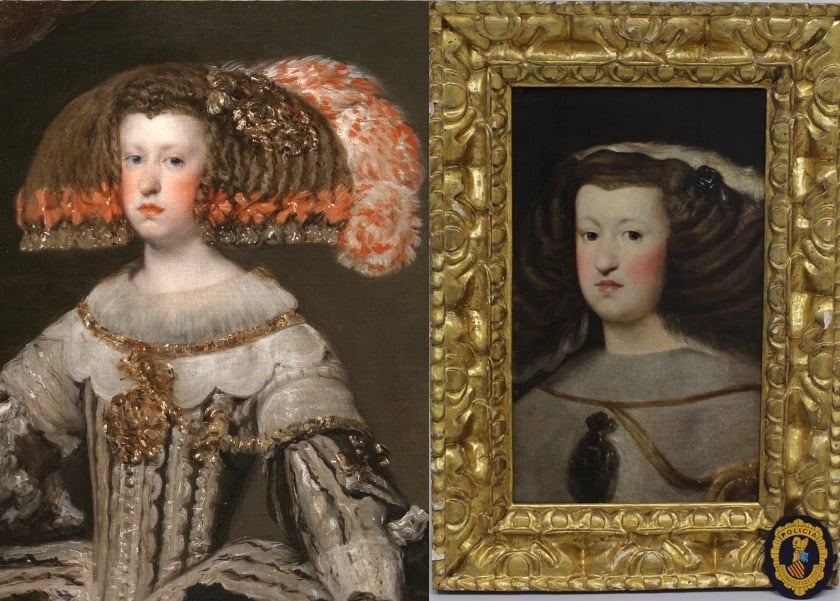
The works will go on view in an exhibition of seized forgeries curated in conjunction with Spanish police.

Sarah Cascone

Spanish police have seized five Old Master forgeries that were being sold for a collective €76 million ($84 million). Four of the works were being marketed as the work of Francisco Goya, and the fifth as a Diego Velázquez.
Investigators got wind of the paintings earlier this year, when the sellers were offering them to a number of art dealers, the London Times reported.
Police from the Patrimonio Histórico division confiscated the works on two separate raids in the coastal city of Valencia—the faux Velázquez on February 8, and the rest some weeks later.
Authorities are investigating four suspects, who have been interviewed, but not arrested, CNN reported. The sellers had also allegedly produced fake provenance documents in the hopes of fooling potential collectors into believing these workers were the genuine article.
La Policía interviene 5 pinturas falsas de Goya y Velázquez que vendían por 76 millones
Thomas Crownhttps://t.co/EvHIyABaB4 vía @voz_populi
— Luis Abeledo (@luisabeledo) April 12, 2023
“The most important thing about this crime is that it devalues the work of our creative people, in this case, great painters in our history,” Gabriela Bravo, head of the regional government’s justice department, said in a statement, noting that art forgery is the fourth-most lucrative type of crime in Spain, after drugs, weapons, and prostitution.
Manuela Mena, a Goya specialist, and David Gimilio, an art technician at the Museo de Bellas Artes de Valencia, have both confirmed that the works were forgeries—but it doesn’t seem like it was that difficult to tell.
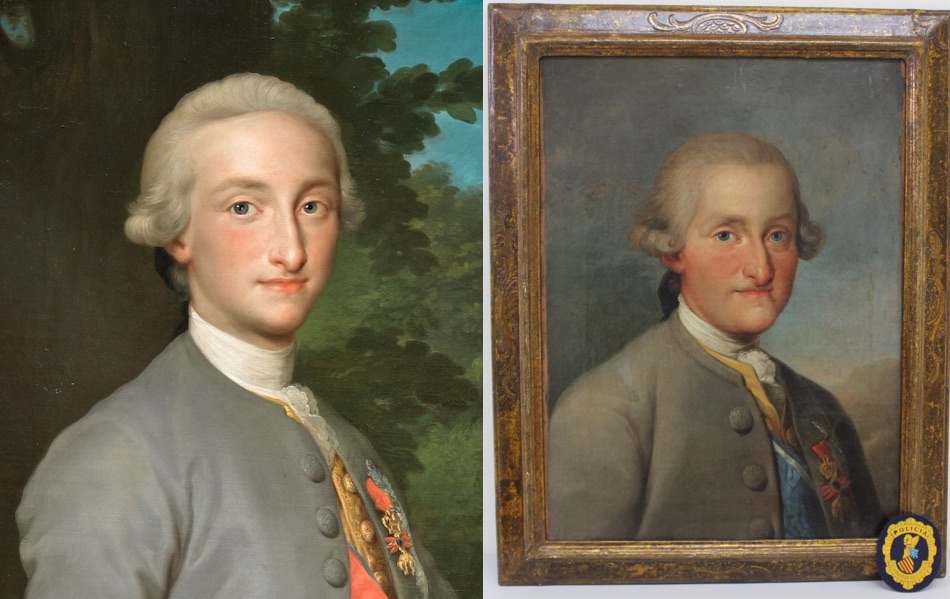
Anton Raphael Mengs, The Prince of Asturias, the future Charles IV (ca. 1765), detail. Collection of the Museo del Prado, Madrid. A recently seized forgery, offered as the work of Francisco Goya.
The priciest of the five works, at €50 million ($55 million) was a copy of Velazquez’s Portrait of Mariana of Austria, the composition cropped to show only her face. The full-length original was painted for the Spanish Royal Family, and is famously in the collection of the Museo del Prado in Madrid.
Two of the ersatz Goyas were also copies of works at the Prado, but by the 18th-century German artist Anton Rafael Mengs. Each priced at €7 million ($7.7 million), the works were based on details from Portrait of Charles IV and Portrait of María Luisa de Parma, Princess of Asturias.
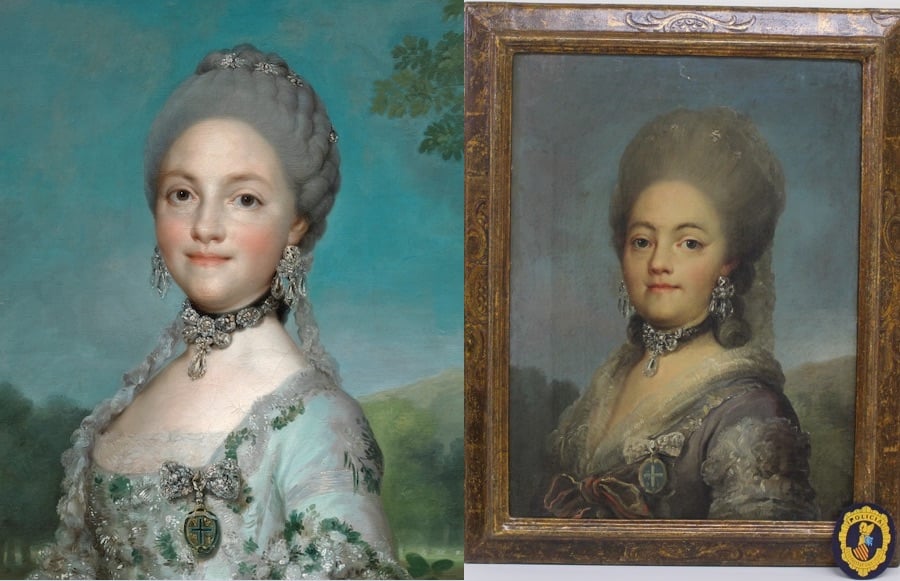
Anton Raphael Mengs, María Luisa of Parma, Princess of Asturias (ca. 1765), detail. Collection of the Museo del Prado, Madrid. A recently seized forgery, offered as the work of Francisco Goya.
The €8 million Blessing of Santa Rosa de Lima appears to be done in the style 17th-century Italian painters Carlo Maratta or Pietro Antonio de Pietri.
The final forgery, titled Allegory of the Pillar of Zaragoza, “was a work of very low quality and not even done by a professional painter,” according to authorities. It had an asking price of €4 million ($4.4 million).
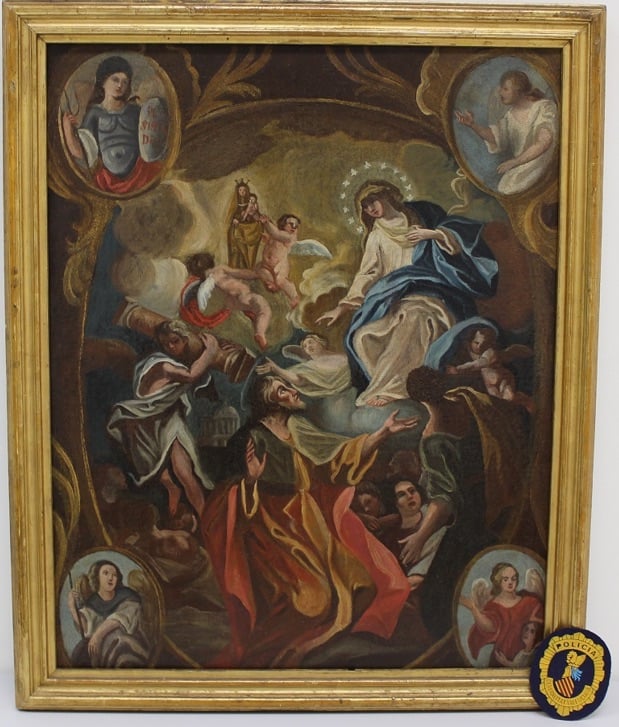
A recently seized forgery, offered as Allegory of the Pillar of Zaragoza by Francisco Goya.
All the forgeries are believed to have originated with the same owner, a Valencia collector who died in 2020.
The Patrimonio Histórico police have partnered with the Museu Valencià de la Illustració i de la Modernitat on an exhibition of 112 counterfeit artworks it has seized in recent years.
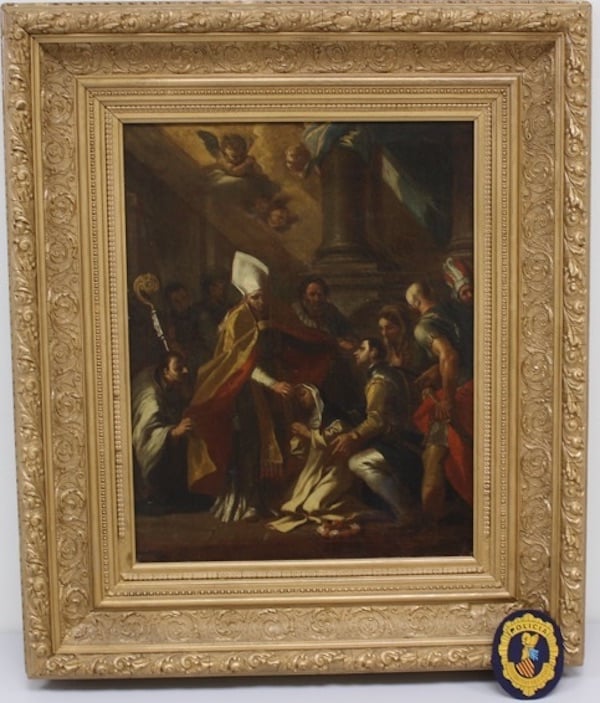
A recently seized forgery, offered as Blessing of Santa Rosa de Lima by Francisco Goya. It appears to be done in the style 17th-century Italian painters Carlo Maratta or Pietro Antonio de Pietri.
The newly identified fakes will soon join the display, according to Spanish news outlet Vozpópuli. Titled “False: The art of deception or art deception,” the exhibition opened late last month and runs through September 3.